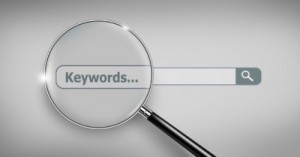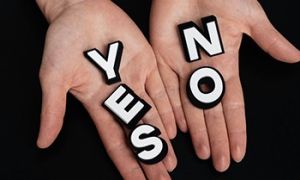Critical reflection has been explained in the EYLF as reflective practices that focus on implications for equity and social justice. In the context of childcare, it involves examining and analysing events, experiences and practices from a range of perspectives to inform future planning and decision-making. The following article provides information on Engaging In Critical Reflections, Questions For Critical Reflections, Practicing Critical Reflections and more.
Why Engage In Critical Reflection
Critical reflection is mandated by NQS as part of the planning cycle. According to NQS Element 1.3.2: Critical reflection: Critical reflection on children’s learning and development, both as individuals and in groups, drives program planning and implementation. While planning, educators may need to reflect critically on their own understandings of Learning Outcomes, personal attitudes and training lessons carried over from the past as well as a choice of learning strategies for the overall development of children.
Critical reflection makes up one of the five principles that reflect contemporary theories and research evidence concerning children’s learning and early childhood pedagogy. According to the EYLF, the approved learning framework for children till five years in Australia, these principles are meant to underpin practice so that all children are supported to make progress in relation to the Learning Outcomes. To put it very simply, critical reflection for educators is ‘thinking about why we do the things that we do’. Through such thinking, educators can gather information and gain insights that support, inform and enrich decision-making about children’s learning.
There is a reason why critical reflection is juxtaposed with ongoing learning in the EYLF Principles – the two go hand-in-hand. By helping educators reflect on what they are doing right in their professional practice, how they can do better and seeking out support or resources that can help them do this, educators are actually creating the groundwork for their own professional growth.
The other way that critical reflection benefits service is by achieving a high-quality program, as it supports the kinds of questions that need to be asked in developing a Quality Improvement Plan as part of the National Quality Framework.
Questions To Practice Critical Reflection
Critical reflection is not something that comes naturally or easily to us – wired as the human brain is to seek out paths of least resistance and fall back upon familiar ways to meet the overall goal of spending less energy on challenging cognitive processes. Educators too, like others, may find it easier to engage in descriptive reflection that just describes details of an event like the children’s role-playing a visit to the doctor or a child’s action like playing with sand. It is much more challenging to reflect critically which requires educators to step out of cognitive zones of comfort and question their own long-held attitudes, beliefs and practices which may no longer be effective. For all these reasons the EYLF suggests a few overarching questions that educators can use to guide their own reflective practices, like:
- What are my understandings of each child?
- What theories, philosophies and understandings shape and assist my work?
- Who is advantaged when I work in this way? Who is disadvantaged?
- What questions do I have about my work? What am I challenged by? What am I curious about? What am I confronted by?
- What aspects of my work are not helped by the theories and guidance that I usually draw on – like Montessori, Reggio Emilia, Waldorf – to make sense of what I do?
- Are there other theories or knowledge – like the Ecological Theory of Bronfenbrenner or the Information Processing of Chomsky – that could help me to understand better what I have observed or experienced? How might those theories and that knowledge affect my practice?
How To Practice Critical Reflection
For educators:
- When educators engage in collaborative reflective practices, they are more likely to usher in change. Learning together makes it easier to experiment with new ideas and ways of teaching and caring, and to keep motivated about making a positive difference to children’s learning. If you are an educator, you can do this by identifying a ‘critical friend’ to support and challenge educators in their thinking and practice. A critical friend can:
- inspire, reminding you of the importance of your work and ongoing learning
- challenge you to explore why and how you do things in particular ways with questions, new insights and alternative perspectives
- support, helping you to identify information, resources and processes to expand your inquiry
- lend an ear and offer friendship when the process becomes too overwhelming.
- Yet another way an educator can practice critical reflection is by developing a Learning Journal that reflects your beliefs and practices about children’s learning. While this could be something for children to look at and enjoy, you can primarily use it to educate parents with regard to your core values on play and learning.
- Developing a philosophy statement with your own team that addresses questions like ‘what do we believe’, ‘why do we hold such beliefs’ and ‘how can translate these beliefs into practice.
For administrator/service
If you are an administrator, service provider or even a senior educator, you can support the process by creating:
- trust and collegiality so that educators feel able to talk about their concerns and the challenges they face without fear of judgment or ridicule
- respect for different viewpoints
- opportunities for all educators to contribute to discussions and debates
- commitment to the inquiry at the organisational level for example providing educators with enough time for reflection and time to develop skills in a range of approaches to reflective practice, like journal writing, critical conversation groups
- recognition that there is no one right approach or answer
- courage to question taken-for-granted practices and assumptions.
Steps For Critical Reflection
The Educators’ Guide to EYLF outlines the essential steps that educators can use to critically reflect upon ideas, programs and practices.
Identify a concern
The first step is to choose an issue for critical reflection – this can happen in a formal setting like a weekly staff meeting or informally over lunchbreak when perhaps some educators begin discussing the challenge of conducting group time for children and how most seem unwilling to join. With educators generally agreeing that none of them are happy with the way group time seems to be working, you have an issue suitable for critical reflective practice.
Gather information
The next step is to collect evidence on what is currently happening and look for patterns. In the above example, staff may decide to use different ways to collect the information about children’s participation in group time, like taking observations and photographs of the children at five-minute intervals to see where the children were positioned and how they were participating, as well as asking children questions about what they understood group-time to be.
Once information is collected, it is time to analyse the date and reflect upon what the information is telling you. For example, in the above instance, educators may find that though a small group of children appeared to be highly engaged in the group times, a relatively large number of children remained disinterested and some even complained of it being too teacher-driven
Frame a question to be explored
Once you have identified what is not working, ask how might the situation be improved. So in the above example, a question framed by educators might be, “How can we rethink group time to make it more meaningful to the children?”
Decide upon action
This is mainly focused on ways to change a practice that is no longer working for example, in this instance, the staff may decide to
- offer ‘workshops’ around music, stories, puppetry, and gardening to children instead of group time so that it would be both be focused on the child’s interest and involve hands-on activities.
- let children could choose between group time and the workshop, thereby giving them more agency and reducing the chances of non-compliance.
Evaluate the change
This is when educators would examine whether the new practices have addressed the issue first identified. Thus in the example, the staff would collect another round of observations and photographs, and then get back to discuss whether they revealed any changes, for example, children who had previously struggled with group time may now appear to have fun in the workshops. On the other hand, if evidence shows children still disengaged from the activities, educators may have to return to the evidence with a fresh set of eyes to identify patterns they may have missed out on earlier – like higher chances of task refusal in the late afternoon than mid-morning, based upon which a different framing question would have to be drawn up and action is taken.
Even when the intervention has been successful, evaluation can give educators a new direction of critical reflection. So for example, once educators realise children need to be given a voice in what they are learning, they can begin to reflect upon how children’s voices might encourage more in the curriculum decision-making process.
Critical reflection benefits the sector as a whole. When early childhood educators and those with whom they work are all involved in an ongoing cycle of review, current practices are examined, outcomes reviewed and new ideas generated, On the other hand, an absence of critical reflection will lead to outdated theories, moribund concepts and practices that are at best ineffective and at worst harmful for children’s development and learning. Critical reflection makes possible a lively culture of professional inquiry in which issues relating to curriculum quality, equity and children’s wellbeing can be raised and debated and evolved.
Further Reading
Reflective Practices In Childcare - The following provides information on What Id Reflective Practice, Process Of Reflection, Sample Of Reflection In Action, Questions For Reflection and more.
Reflections In Action Posters - The posters give educators guidance on the reflection and include what to reflect on when to reflect, how to reflect and reflection recommendations. These are great to add to the staff room for Educators.
Writing Prompts For Evaluations, Reflections and Children Documentation - The following will give you examples of writing prompts you can use to complete your written work.
References:
- What Are Critical Reflections, ACECQA
- Belonging, Being and Becoming, ACECQA
- Guide To The EYLF, ACECQ







 Here is the list of the EYLF Learning Outcomes that you can use as a guide or reference for your documentation and planning. The EYLF
Here is the list of the EYLF Learning Outcomes that you can use as a guide or reference for your documentation and planning. The EYLF The EYLF is a guide which consists of Principles, Practices and 5 main Learning Outcomes along with each of their sub outcomes, based on identity,
The EYLF is a guide which consists of Principles, Practices and 5 main Learning Outcomes along with each of their sub outcomes, based on identity, This is a guide on How to Write a Learning Story. It provides information on What Is A Learning Story, Writing A Learning Story, Sample
This is a guide on How to Write a Learning Story. It provides information on What Is A Learning Story, Writing A Learning Story, Sample One of the most important types of documentation methods that educators needs to be familiar with are “observations”. Observations are crucial for all early childhood
One of the most important types of documentation methods that educators needs to be familiar with are “observations”. Observations are crucial for all early childhood To support children achieve learning outcomes from the EYLF Framework, the following list gives educators examples of how to promote children's learning in each individual
To support children achieve learning outcomes from the EYLF Framework, the following list gives educators examples of how to promote children's learning in each individual Reflective practice is learning from everyday situations and issues and concerns that arise which form part of our daily routine while working in an early
Reflective practice is learning from everyday situations and issues and concerns that arise which form part of our daily routine while working in an early Within Australia, Programming and Planning is reflected and supported by the Early Years Learning Framework. Educators within early childhood settings, use the EYLF to guide
Within Australia, Programming and Planning is reflected and supported by the Early Years Learning Framework. Educators within early childhood settings, use the EYLF to guide When observing children, it's important that we use a range of different observation methods from running records, learning stories to photographs and work samples. Using
When observing children, it's important that we use a range of different observation methods from running records, learning stories to photographs and work samples. Using This is a guide for educators on what to observe under each sub learning outcome from the EYLF Framework, when a child is engaged in
This is a guide for educators on what to observe under each sub learning outcome from the EYLF Framework, when a child is engaged in The Early Years Learning Framework describes the curriculum as “all the interactions, experiences, activities, routines and events, planned and unplanned, that occur in an environment
The Early Years Learning Framework describes the curriculum as “all the interactions, experiences, activities, routines and events, planned and unplanned, that occur in an environment


